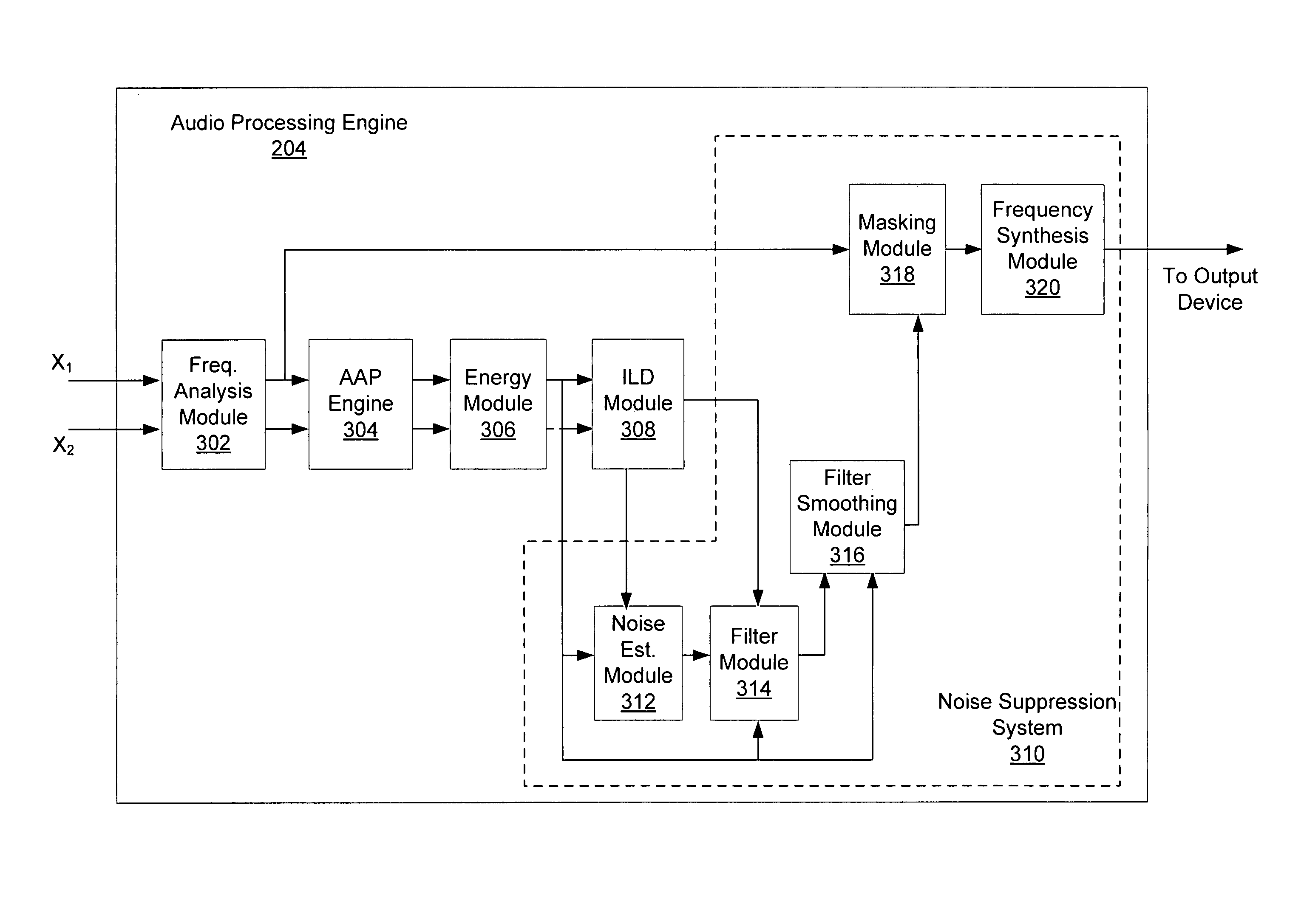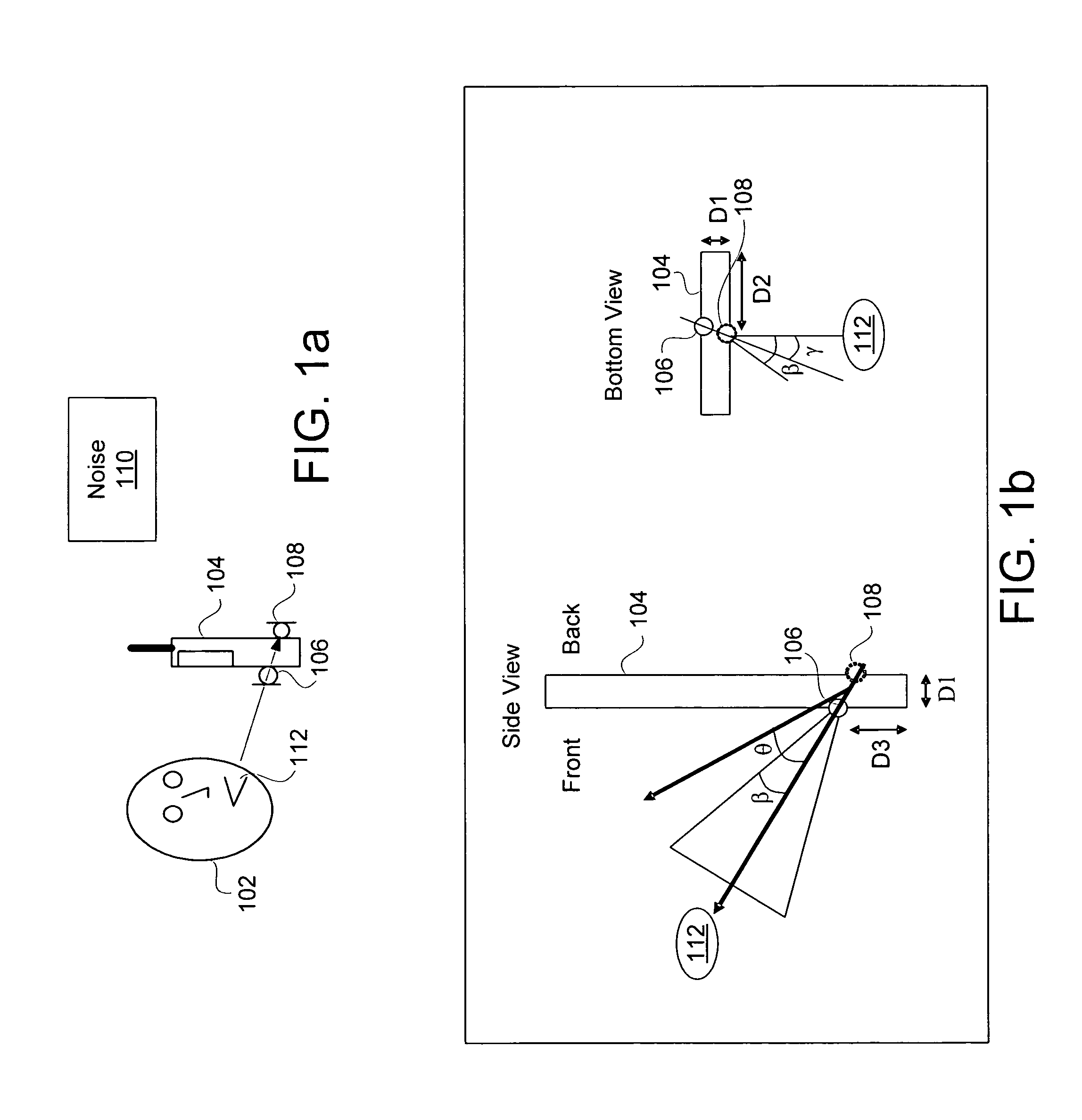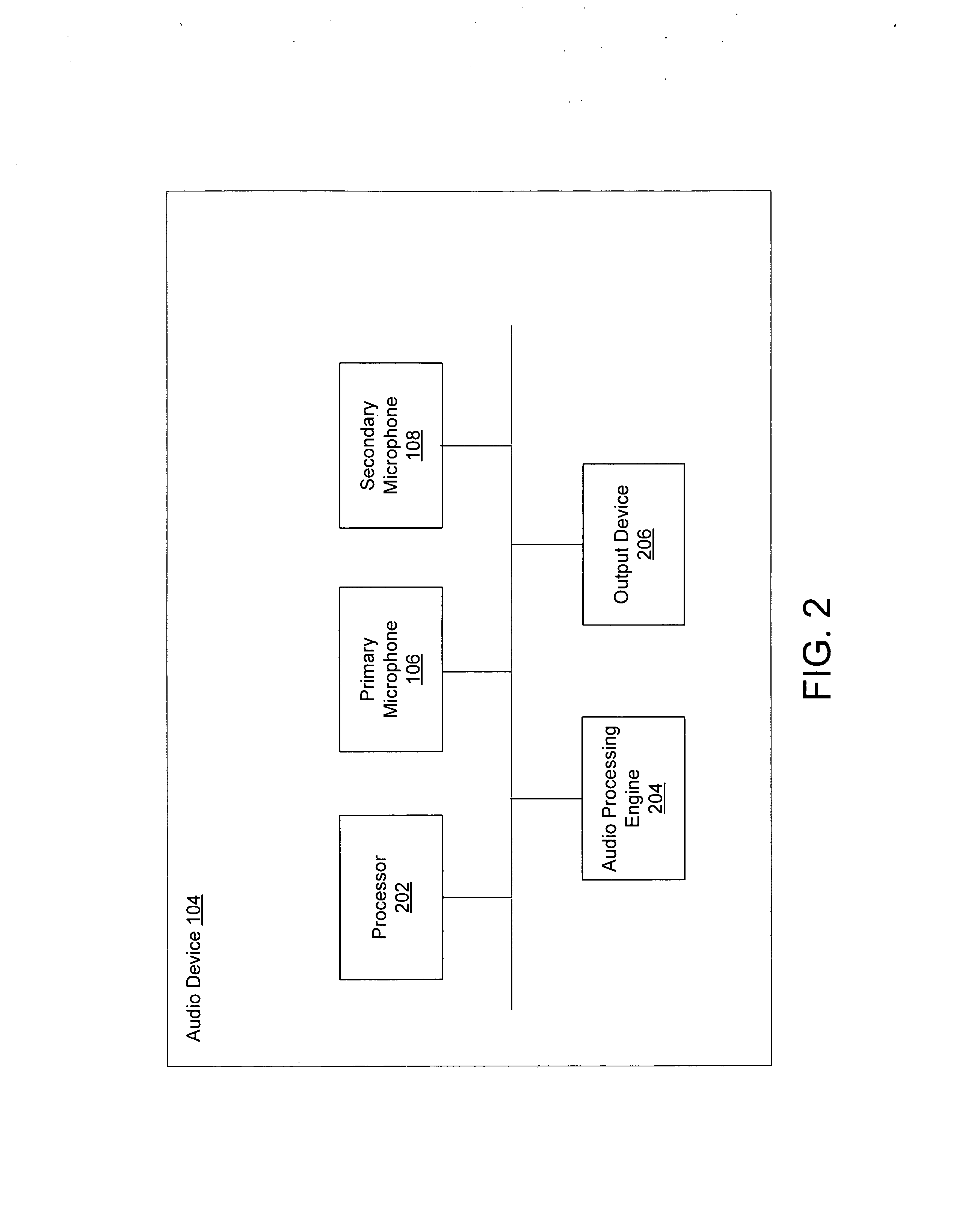System and method for providing close microphone adaptive array processing
a technology of adaptive array and close microphone, applied in the field of audio processing, can solve the problems of large size of directional microphone, difficult mounting of directional microphone, and numerous physical and economic drawbacks of directional microphones, and achieve the effect of suppressing nois
- Summary
- Abstract
- Description
- Claims
- Application Information
AI Technical Summary
Benefits of technology
Problems solved by technology
Method used
Image
Examples
Embodiment Construction
[0019]The present invention provides exemplary systems and methods for adaptive array processing in close microphone systems. In exemplary embodiments, the close microphones used comprise omni-directional microphones. Simulated directional patterns (i.e., cardioid patterns) may be created by processing acoustic signals received from the microphones. The cardioid patterns may be adapted to compensate for microphone mismatch. In one embodiment, the adaptation may result in a null of a backward-facing cardioid pattern to be directed towards a desired audio source. The resulting signals from the adaptation may then be utilized in a noise suppression system and / or speech enhancement system.
[0020]Array processing (AP) technology relies on accurate phase and / or level match of the microphones to create the desired cardioid patterns. Without proper calibration, even a small phase mismatch between the microphones may cause serious deterioration of an intended directivity patterns which may in...
PUM
 Login to View More
Login to View More Abstract
Description
Claims
Application Information
 Login to View More
Login to View More - R&D
- Intellectual Property
- Life Sciences
- Materials
- Tech Scout
- Unparalleled Data Quality
- Higher Quality Content
- 60% Fewer Hallucinations
Browse by: Latest US Patents, China's latest patents, Technical Efficacy Thesaurus, Application Domain, Technology Topic, Popular Technical Reports.
© 2025 PatSnap. All rights reserved.Legal|Privacy policy|Modern Slavery Act Transparency Statement|Sitemap|About US| Contact US: help@patsnap.com



